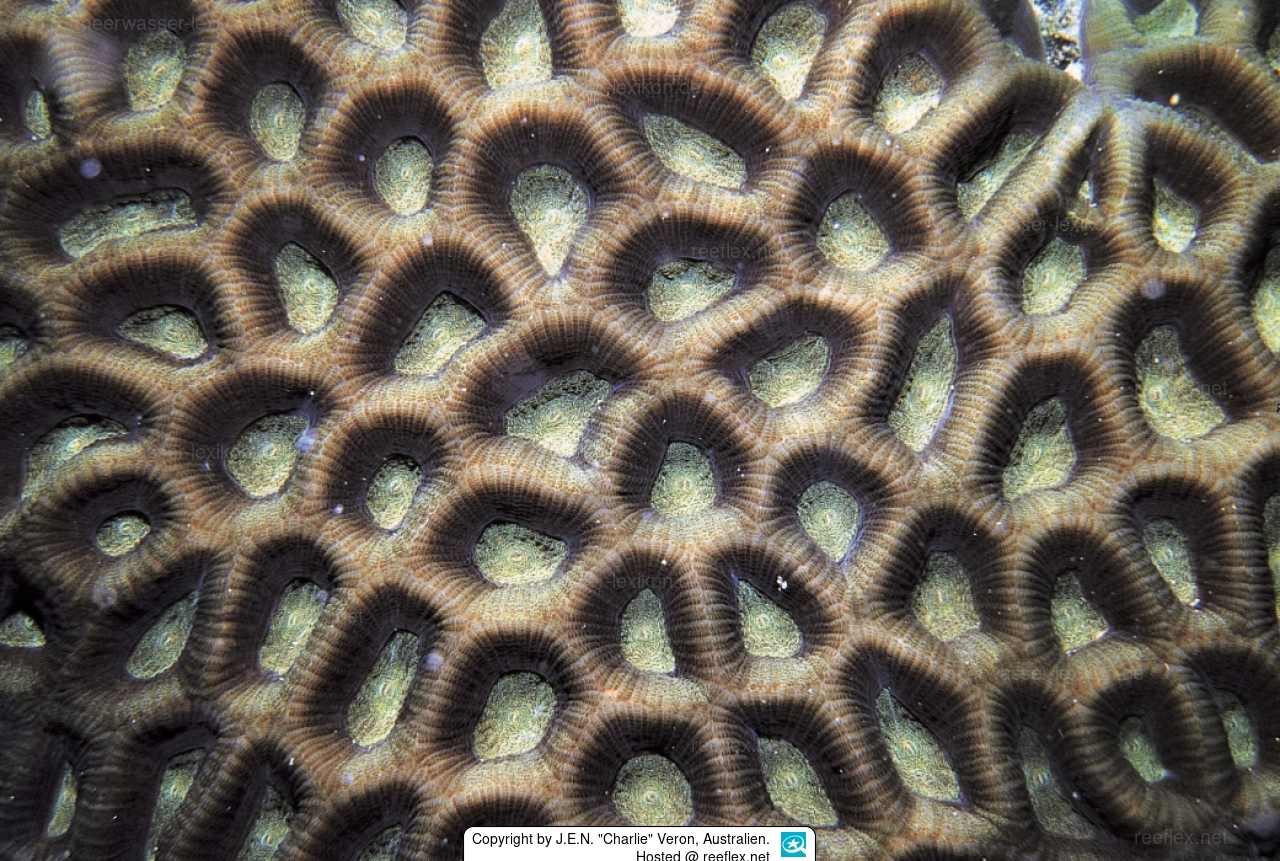Info
Favites paraflexuosus Veron, 2000
Characters: Colonies are hemispherical or flat. Corallites are angular and deep. Septa are even, with fine teeth. Paliform lobes are weakly developed.
Colour: Brown with pale oral discs.
Habitat: Shallow reef environments.
Abundance: Uncommon.
Similar species: Favites flexuosa , Favites vasta
Source reference: Veron (2000). Taxonomic reference: Veron (2002).
Synonym: Favites paraflexuosa Veron, 2000 · unaccepted (wrong spelling species name)







 Dr. John Edward Norwood "Charlie" Veron, Australien
Dr. John Edward Norwood "Charlie" Veron, Australien


















